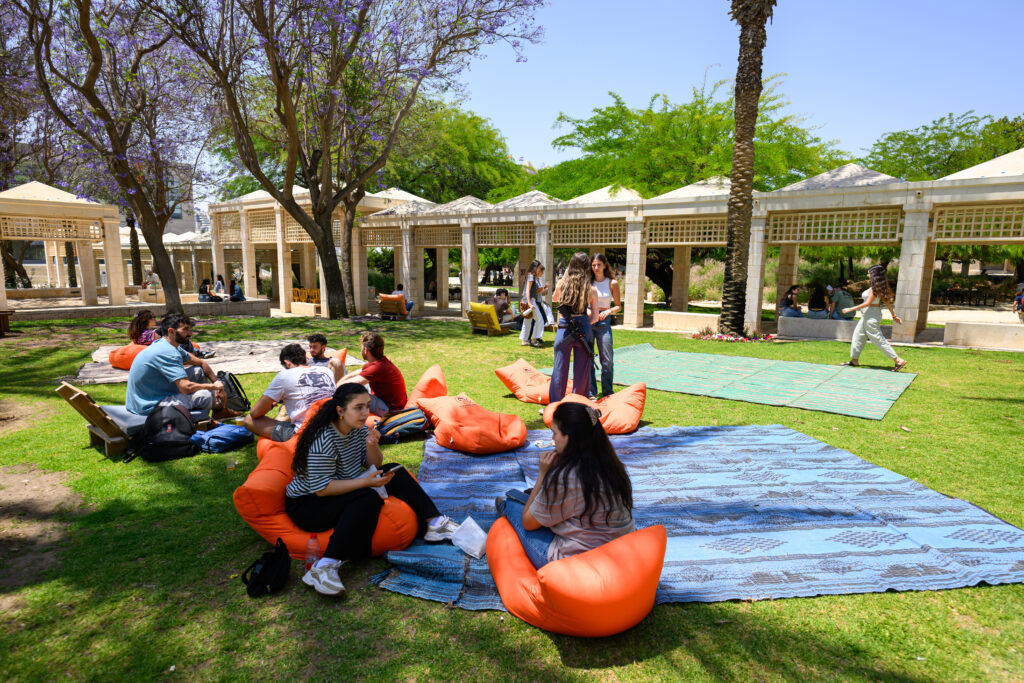
Genetic Cause of Bedouin Children’s Disease Discovered
Genetic Cause of Bedouin Children’s Disease Discovered
July 30, 2008
Medical Research, Negev Development & Community Programs, Press Releases
BEER-SHEVA, ISRAEL – January 9, 2007 – Ground-breaking researchers at Ben-Gurion University of the Negev (BGU) and Soroka University Medical Center in Beer-Sheva have identified the genetic defect responsible for Infantile Neuroaxonal Dystrophy (NAD), a severe and often fatal neurodegenerative disease common in children of the Bedouin people, an Arab formerly nomadic tribe with a large population in Southern Israel.
Led by Dr. Ohad Birk of the Morris Kahn Laboratory of Human Genetics at the National Institute for Biotechnology in the Negev at BGU, and director of the Genetics Institute at Soroka University Medical Center, the research team discovered the specific gene that causes NAD. Before a molecular basis for the disease was found, pre-natal diagnosis and other genetic tests for the disease were impossible.
Using brain imaging of affected individuals, the research group from BGU found that the individuals’ brains displayed diffuse cerebellar atrophy and abnormal ion deposition. Their research pinpointed the genetic defect that accompanies NAD and concluded that the gene encodes a phospholipase – an enzyme which normally breaks down phospholipids. This defect then causes the degradation of certain phospholipids in the brains of the patients.
“While life-changing for the Bedouin tribe and Israeli people, the consequences of this discovery reach beyond this single disease,” said Dr. Birk. “Finding this defect in the phospholipase enzyme opens up other common and severe neurodegenerative diseases such as Alzheimer’s and Parkinson’s to share in this whole new field of research.”
Children stricken with the debilitating NAD have fine health until their first birthday, after which their neurological function declines until they reach a vegetative state a year later. The children typically live only until 7 to 10-years-old. NAD can be found in several populations around the world, but occurs most often in the children of consanguineous marriages or intermarriages between close relatives such as first cousins.
The research was recently published in the American Journal of Human Genetics along with a similar study done by a research group in the United States, studying the same disease in another population. Dr. Birk’s Israeli research team included doctorate student Shareef Khateeb, as well as Dr. Hagit Flusser, Dr. Rivka Ofir and other members.
BGU’s Morris Kahn Laboratory at the National Institute for Biotechnology in the Negev focuses on unraveling the molecular basis of hereditary human diseases based on studies of unique inbred communities in Southern Israel. The research results are immediately implemented as genetic tests made available to the community, promoting community welfare. Over the past two years, the research team has discovered the links between eight genes and human diseases and introduced more than two dozen novel genetic tests.
ABOUT AMERICANS FOR BEN-GURION UNIVERSITY
By supporting a world-class academic institution that not only nurtures the Negev, but also shares its expertise locally and globally, Americans for Ben-Gurion University engages a community of Americans who are committed to improving the world. David Ben-Gurion envisioned that Israel’s future would be forged in the Negev. The cutting-edge research carried out at Ben-Gurion University drives that vision by sustaining a desert Silicon Valley, with the “Stanford of the Negev” at its center. The Americans for Ben-Gurion University movement supports a 21st century unifying vision for Israel by rallying around BGU’s remarkable work and role as an apolitical beacon of light in the Negev desert.
About Ben-Gurion University of the Negev
Ben-Gurion University of the Negev embraces the endless potential we have as individuals and as a commonality to adapt and to thrive in changing environments. Inspired by our location in the desert, we aim to discover, to create, and to develop solutions to dynamic challenges, to pose questions that have yet to be asked, and to push beyond the boundaries of the commonly accepted and possible.
We are proud to be a central force for inclusion, diversity and innovation in Israel, and we strive to extend the Negev’s potential and our entrepreneurial spirit throughout the world. For example, the multi-disciplinary School for Sustainability and Climate Change at BGU leverages over 50 years of expertise on living and thriving in the desert into scalable solutions for people everywhere.
BGU at a glance:
20,000 students | 800 senior faculty | 3 campuses | 6 faculties: humanities & social sciences, health sciences, engineering sciences, natural sciences, business & management, and desert research.
For all press inquiries, please contact:
James Fattal, J Cubed Communications
516.289.1496



